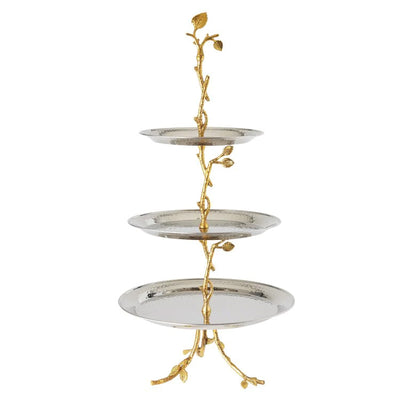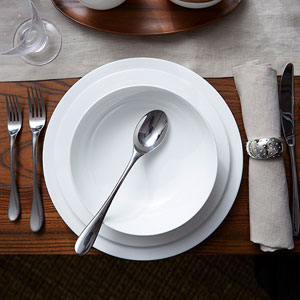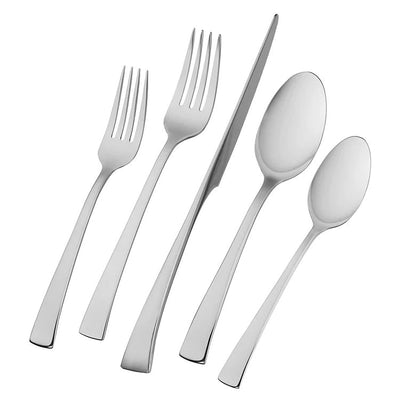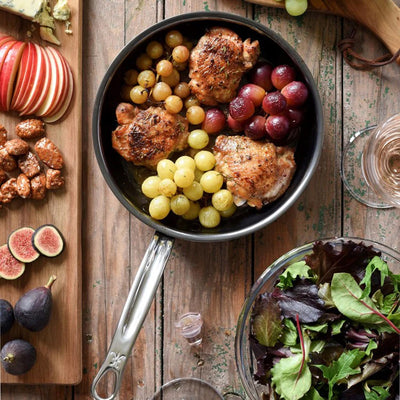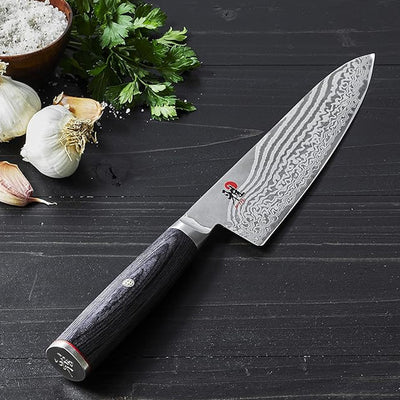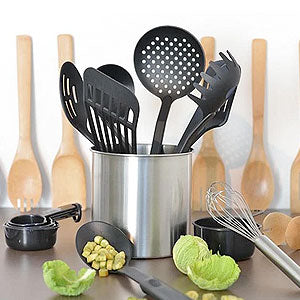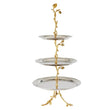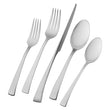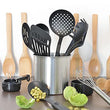Dining & Entertaining
Eat More Veggies! Tips For Enticing Vegetable Presentations

Make your vegetables fly off the table by serving them in style on eye-catching serving platters.
People enjoy food as much with their eyes as with their taste pallet. Move on from boring baby carrots in a mixing bowl and get creative with appetizing presentations on beautiful serveware. A variety of colorful veggies, creatively cut and arrayed on serving platters are irresistible. Read on to learn tips and tricks to layout everything from crudite to roasted broccoli to Greek salad so you, your family, and your guests are sure to eat your vegetables.
Choose the Perfect Vegetable Serveware
Make your vegetables fly off the table by serving them in style on eye-catching serving platters. Explore different sizes, colors, and shapes appropriate for the occasion—whether that's dinner for the family or a gathering. And remember to check your plates, bowls, baskets, trays and boards regularly for chips and cracks. Here are some ideas to get your started:
Throw a vegetable party on a cheeseboard. Use a fine Irish cheddar to draw hungry guests to a gorgeous white marble cheeseboard. Then offer crisp counterpoints with cucumber slices, and julienned green, orange, and red bell peppers.
Create an artful centerpiece with a basket or bowl. A mix of vibrant veggies always makes a stunning centerpiece for the dining table or the buffet table when you are entertaining. But these same veggies (say blanched roll-cut carrots and zucchini or string beans) steal the show in a mouth-blown glass bowl streaked with gold.

Think beyond the supermarket veggie tray.
Add sophistication to your veggies with stylish serving trays. Pay your fancy-cut carrots, thin-sliced cukes, and flower-carved radishes the complement of showcasing them on a tray worthy of the time you spent prepping them. They'll look gorgeous on a triangular hammered stainless steel cooking tray—and keep at your preferred temperature longer because of the double-wall design.
Make your crudités chic, rather than commonplace. Think beyond the supermarket veggie tray which—let's be honest—is usually the wallflower of the buffet table. Instead, set out a mix of raw and blanched vegetables accompanied by a homemade dip or your favorite hummus. Serve on a hammered gold oval platter to bring contemporary elegance to special occasions. Or, present your mix of cherry tomatoes, green beans, sugar snap peas, shishito peppers, cauliflower, and broccoli on a handcrafted gold-edged square platter.
Get people dipping those carrots, celery, and cukes. Repurpose chip and dip servers for your presentation of rainbow bell peppers, celery, and carrots. A crystal chip and dip bowl brightens the overall presentation, while a wooden version makes it easy to take the party outside in rustic style. Some chip and dip servers have sculptural elegance, with the dip bowl artfully elevated.
Serve up spoonable veggies, too. A bowl of roasted Brussel sprouts. Coleslaw. Roasted potatoes. Sauteed mushrooms. Set these delectables out in bowls and shallow platters in colors and finishes that draw out their colors. Trust your eye. If it looks delicious to you, it'll probably look delicious to everyone at the table. Make sure to set out large serving spoons and forks too, so people can dish out with large serving spoons so people can serve themselves heaping portions.

Vegetables can take center stage on the dinner table on 'Meatless Mondays' or any day of the week.
Make veggies the main dish. Vegetables can take center stage on the dinner table on 'Meatless Mondays' or any day of the week. Serve up cauliflower steaks, curried chickpea-stuffed sweet potatoes, or eggplant parmesan for nutritious and mouth-watering meals. Place them family-style on oversized ceramic platters for a tempting display.
Match the Veggie Proportions to the Dish
Look at the size of your serving dishes before chopping your veggies and adding them to the plate. Smaller plates call for finely chopped vegetables. The size of your plate or bowl should also balance with the quantity of food you are serving. If the portion overwhelms the dish, it comes off as crowded, messy, and unappealing. Try to leave half an inch between your vegetables and the edge of a flat plate or tray. Conversely, using a large piece of serveware for a small amount of food makes it look sparse.
Bowl People Over with Your Food Presentation Techniques
Make guests want to eat their vegetables by carefully arranging them in a serving bowl or plate instead of simply piling. Try these presentation ideas:
- Cascading: Spread an abundance of finely shredded greens across half of a white serving plate. Then cascade an accompaniment to the greens, whether it's more veggies chopped for dipping or a penne pasta shrimp salad.
- Patterns: Ring cucumber and radish slices in a spiral up against the rim of a white or glass bowl. Build a nest of hummus in the center, with a few carrot curls for decoration. Or, you can create bold lines of color on an oversized platter with carrots next to cherry tomatoes next to blanched asparagus.
- Framing: Feature a colorful southwest vegetable dip in the center of a dark platter. Use blue and yellow corn chips around the edges to provide pleasant contrast to your delicious mix of yellow sweet corn, red bell peppers, onions, fresh green cilantro, jalapeno peppers, and black beans.
- Fanning: Snow peas, red bell peppers, carrot planks. These veggies look beautiful fanned out across a shallow bowl or on a flat platter. Place the fanned vegetables on a bed of Asian slaw to add another layer.
Make Your Veggie Presentation Fun
Arrange your vegetables in creative, artful, or silly ways—especially if you've got kids at the table. Create a colorful flower garden on a dark metal serving tray with baby carrots and broccoli as grass and dirt, celery for flower stalks, yellow peppers as petals, and cherry tomatoes in the center. Or make butterflies with carrot slices for the body and big red tomato slices as wings, served on a classic white oval porcelain platter.
Pay Attention to the Details
Add contrast and color. Arrange your vegetables alongside other multi-color elements like ham, turkey, roast beef, prosciutto, and salami on a wooden swoop cheese board. Position your green vegetables for a beautiful backdrop, and your brightly colored veggies as accent pieces.
Enhance visuals with texture. Use a Japanese mandolin to finely shave vegetables to the point they are almost translucent, then pair them with thick-cut vegetables on a glass platter. Change the blade to create crinkle, matchstick, and waffle cut veggies, too. Sprinkle chickpeas and other small, round beans in between vegetable groupings on a large, sloop-shaped Marupa bowl for a quilt effect.
Use height to catch the eye. Stack vegetables high toward the middle of a large round stainless steel platter. Try building a small mountain of round radishes or cherry tomatoes, with Julienned carrots or celery sticks leaning up against them for contrast.
Match Your Serveware Sets to Your Room Décor
Accentuate your home and outdoor décor style with serveware in colors, materials, and finishes to match. You can choose fish-shaped platters with an azure enamel finish to enhance a coastal theme. Enhance your contemporary décor with a pearled silver platter or a bold hammered black and copper serving bowl. An Acacia wood and metal tray perfectly complements your welcoming rustic or farmhouse style.

Accentuate your home and outdoor décor style with serveware in colors, materials, and finishes to match.
Make Veggies the Center of Attention
No matter what piece of serveware you use, strategically the vegetables on the platters—and within your overall party or dinner layout—makes them less of an afterthought. Here are some quick tips to make your veggies a hot commodity:
- Keep your vegetables in the middle of your spread, surrounded by everything else.
- Serve varying quantities of items—more celery sticks than mushrooms, for example—to add to the visual appeal.
- Mix up vegetable colors to draw eyes instead of having all your greens in one place or radishes next to cherry tomatoes.
- Present dark color veggies on white plates, lighter whites, yellows, oranges, and reds on dark platters to make them pop.
- Experiment with texture and color by adding different sauces.
When presenting vegetables, you are limited only by your imagination. Have an array of serveware in your cupboard so you can match the vegetable to the platter, and flatware for easy serving. Finally, keep charming or chic table linens to create a lovely backdrop for your veggie display.

